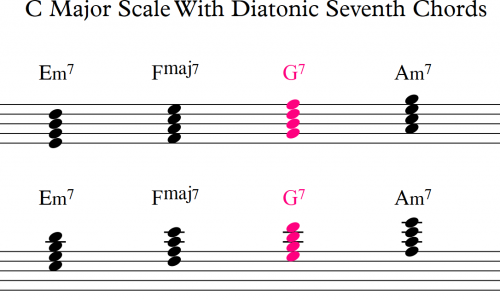
What are melismas in music
Music is the art of the beauty of sound. In most pieces of music, the melody predominates over the accompaniment. The expressiveness of the melodic line, smoothness or spasmodicity, timbre – all this sets the mood and image of the composition. Melismas help to enrich the melody, make it brighter, more embossed and more elegant. What are melismas and ornamentation? Where did these terms come from? What are the signs for designating melismas and how are they deciphered? You will learn about it on this page.
What are ornaments and melismas?
The term ornamentation comes from the Latin word ornamentum. The word is translated into Russian as decoration. In musical practice, ornamentation includes a variety of ways that allow you to decorate a melody with the help of auxiliary tones. Additional figures are called ornamentation, these include:
- figurations – a method of textural processing of musical material, a variational method of development;
- fioritures (transl. flowering) – virtuoso passages with small durations;
- passages – scale movement;
- tiraty is a fast-acting scale-like passage. The term is more typical for vocal art, although it is often found in professional instrumental music.

Melismas is a musical term for small musical embellishments. This designation is found both in vocal and instrumental music. Melismas differ in the duration of the sound, in the complexity of the performance.
The main melismas used in classical music are considered to be:
- short grace note;
- long grace note;
- mordent;
- gruppetto;
- trill;
- arpeggio.

Music has a peculiar language, so it is not surprising that melismas are some kind of abbreviations that require deciphering. Such a need to create special signs arose solely to save time. Let’s consider each of the melismas separately.
Grace note: notation, how to play

Translated from German as a beat before a note. This melodic decoration may consist of one or more sounds. The grace note precedes one of the sounds of the melody. It is important to consider that with regard to rhythm, melisma is included in the account of the duration to which it is attached. Typically, the notation is a small note or notes that are placed above the note of the melody or chord. There are two types of duration: short and long. Unlike a short one, the duration of a long grace note almost always takes up half or a third of the main note. It is extremely rare. Look at the picture and listen to the sound of the short grace note and the sound of the long grace note.
Grace game rules:
- Play the grace note quickly.
- Choose the right app. It is advisable to use adjacent fingers.
- The movement should be smooth, sliding.
- Emphasis must be placed on the main note.
Mordent: notation, how to play

Mordents are divided into single or double. However, they can be crossed out or simple. Indicated as a sharp wavy line.
A simple single mordent is a sing of the main sound from above. In this case, the duration is split. Hear how this decoration sounds.
The double mordent is twice as long as the single mordent. At the same time, it must be performed at the expense of the main note, that is, it must not take more time than the specified duration. Listen to how the crossed out and simple double mordents sound.

Gruppetto is deciphered as a group of notes, consisting of progressive chanting of the main sound. So if the gruppetto sign is above the note “do”, then it will be deciphered as “re”, “do”, “si”, “do”. Where re and si will be introductory tones. This figure is performed within the main duration.
Trill: notation how to play

According to the performance technique, the trill is one of the most virtuoso and complex techniques. It is a rapid alternation of adjacent notes, reminiscent of nightingale trills. Indicated as a combination of the letters “tr” above the main note. Listen to how this decoration sounds:
The trill must be played as follows:
- There is no need to rush when playing a sequence of notes in a trill for the first time.
- Shift your weight from one finger to another;
- Keep track of the evenness of the sound;
- Play slowly until you feel free to move;
- Gradually increase the pace until you bring it to the required speed.
It is important that the trill is even and does not disturb the overall meter rhythm in the composition.
Arpeggio: notation how to play

This technique is typical primarily for the performance of chords, less often for intervals. It is most commonly used for instruments such as the piano, harp, guitar, or string group of instruments. Indicated by a curly vertical line along the entire chord. Sounds are played from the bottom up in a fast sequential movement. Listen to how a chord sounds when played with an arpeggio.
How to learn to play arpeggios:
- Choose a convenient fingering;
- Slowly play the chord sound sequence;
- Observe the evenness of the rhythm;
- Gradually, the speed can be increased;
- Make sure that the shoulders do not rise, as this indicates clamps.
- Movements must be fast and agile.
It is important that the hand is not clamped during the performance. The brush must be free, it must tend to the upper sound of the chord.
History of ornamentation
When music was born, then there was a desire to make the motive more diverse with the help of interesting turns. Gradually, when musical notation was established , when musical art was canonized, then the countdown began in the history of ornamentation. The fact is that many of the revolutions became not only part of improvisation, but also certain symbols that were often written out by composers.
The use of melismas in both instrumental and vocal music gained particular popularity during the Baroque era. Music in the period from the 16th-18th century was filled with fine decorations. In many of Bach’s works, mordents and trills can be found.
In those days, the genre of “concert” prevailed. The peculiarities of the genre include the moment of competition, in the solo cadence the performer had to demonstrate not only virtuosity and brilliant command of the instrument, but also an individual musical style. The appropriate use of melismas helped to add liveliness and character to the music, and also showed the musician’s ability to skillfully improvise.
In vocal music, especially in Italian opera , ornamentation was given great importance. Singers must have mastered the techniques that help to sing graces with ease.
Countless ornamental and exquisite works can be found in the Rococo era. The abundance of melismas prevails in the work of the French harpsichordists Francois Couperin and Jean Philippe Rameau.
In the music of romanticism, melismatics also found active use. In the piano miniatures of Franz Liszt , Frederic Chopin , melismas helped to color the melody, make it more heartfelt and touching.
Melismas can also be heard in modern music. So in jazz and blues, musicians often use grace notes and trills. These decorations are especially characteristic of improvisations.





